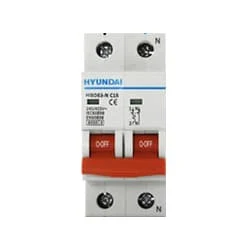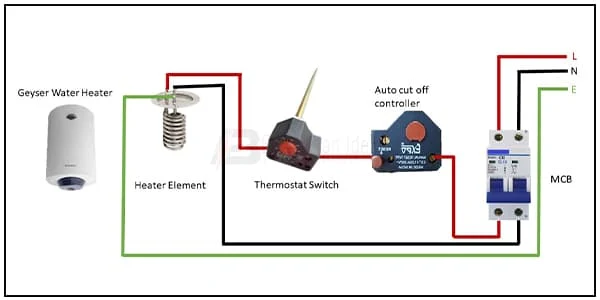Geyser Water Heater Wiring:
This diagram shows how to connect geyser water heater wiring. In this circuit diagram, we just describe how to easily connect a geyser. In this diagram, we use a geyser, heater element, thermostat switch, and DP MCB. If you want to know more details about this diagram please check our youtube video below the link.
Diagram of Geyser Water Heater wiring:
Components Need for this Project:
You can get the components from any of the sites below:
Read Also:
Components used to make the Geyser Water Heater wiring:
01. DP MCB
 |
| Fig 2: DP MCB |
02. Geyser
 |
| Fig 3: Geyser |
03. Thermostate Switch
 |
| Fig 4: Thermostate Switch |
Thank You for visiting the website. Keep visiting for more Updates
Frequently Asked Questions
The geyser may be fed (cold water) with (plastic) pipe - up to the shut-off valve, but the pipe into and out of the geyser must be copper or galvanized steel. The PCV or T&P vent pipes also have to be steel and copper, especially the T&P vent.
Most electric water heaters installed in North America require a 30-ampere grounded 240-volt connection which requires a pair # of 10 copper wires PLUS a ground wire. Copper 12/2 wire is rated for a maximum of just 20 amperes and would be inadequate both in current capacity and for lacking a ground wire.
Iron boxes, ACs, and geysers use 3-pin plugs for safety reasons and to ensure proper functioning. The third pin, known as the earth and ground pin, is a safety feature that helps to prevent electric shock in case of a fault in the appliance.
Larger sizes are usually black and gray, but there's really no color standard for anything larger than #10. The standard for water heater circuits diagram is #10, two conductors with ground (10/2) and a 30 amp circuit diagram breaker for a water heater.
Can I use a 10-3 wire for a hot water heater? No, you'd be wasting money, a 10–2 wire with a ground for a standard 40-gallon electric water heater with 2 elements, a 30 amp 230v line is required. with a 2-pole 30-amp breaker at the source. a neutral is not required.


Post a Comment
Do leave your comments